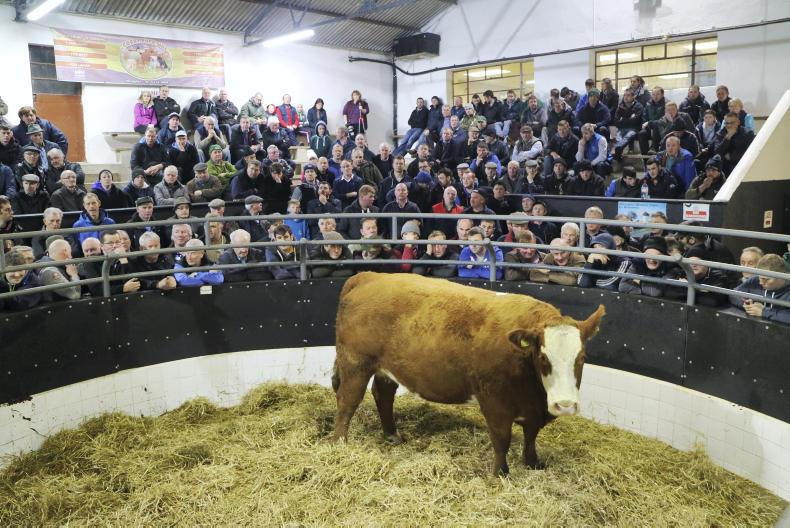The Department of Agriculture is planning to tighten rules on farm-to-farm cattle sales and cattle movements through marts, from later this year.
The move is aimed at increasing traceability to safeguard existing premium export markets and open new ones.
It will mean reduced flexibility for farmers, marts and cattle dealers. A farmer seeking a movement certificate to sell cattle to another farmer would have to identify the buyer’s herd when applying, the Irish Farmers Journal understands. The seller would then have seven days to move the cattle to the buyer’s herd.
The present rules are more flexible: a farmer can obtain a movement certificate, choose a buyer and then has 30 days to complete the movement.
Likewise, a dealer can presently buy cattle and then, over following days, sell them to any one of his cattle-buying clients. Many farmers choose to buy in stock this way rather than travel to marts themselves. But that trade could also be tightened up under the planned new rules.
At present, there are about 1.3m farm-to-farm cattle sales each year arranged by farmers and dealers.
The Department is considering tighter rules for marts. After selling cattle, marts would have to notify the Department of the buyer’s herd within 24 hours. Marts warn this would be difficult to comply with at times of peak trade and for weekend sales.
In addition, farmers will not be able to sell calves until they are 10 days of age. Although this rule could be enacted within weeks, it will not be implemented until 1 January 2019, as dairy farmers in particular will need time to adjust.
The Department will consult with the farm organisations and other stakeholders before finalising these new rules.
Read more
Cattle farmers face €1m hit on empty tags
French-bound boat sails with 2,500 calves
The Department of Agriculture is planning to tighten rules on farm-to-farm cattle sales and cattle movements through marts, from later this year.
The move is aimed at increasing traceability to safeguard existing premium export markets and open new ones.
It will mean reduced flexibility for farmers, marts and cattle dealers. A farmer seeking a movement certificate to sell cattle to another farmer would have to identify the buyer’s herd when applying, the Irish Farmers Journal understands. The seller would then have seven days to move the cattle to the buyer’s herd.
The present rules are more flexible: a farmer can obtain a movement certificate, choose a buyer and then has 30 days to complete the movement.
Likewise, a dealer can presently buy cattle and then, over following days, sell them to any one of his cattle-buying clients. Many farmers choose to buy in stock this way rather than travel to marts themselves. But that trade could also be tightened up under the planned new rules.
At present, there are about 1.3m farm-to-farm cattle sales each year arranged by farmers and dealers.
The Department is considering tighter rules for marts. After selling cattle, marts would have to notify the Department of the buyer’s herd within 24 hours. Marts warn this would be difficult to comply with at times of peak trade and for weekend sales.
In addition, farmers will not be able to sell calves until they are 10 days of age. Although this rule could be enacted within weeks, it will not be implemented until 1 January 2019, as dairy farmers in particular will need time to adjust.
The Department will consult with the farm organisations and other stakeholders before finalising these new rules.
Read more
Cattle farmers face €1m hit on empty tags
French-bound boat sails with 2,500 calves





SHARING OPTIONS